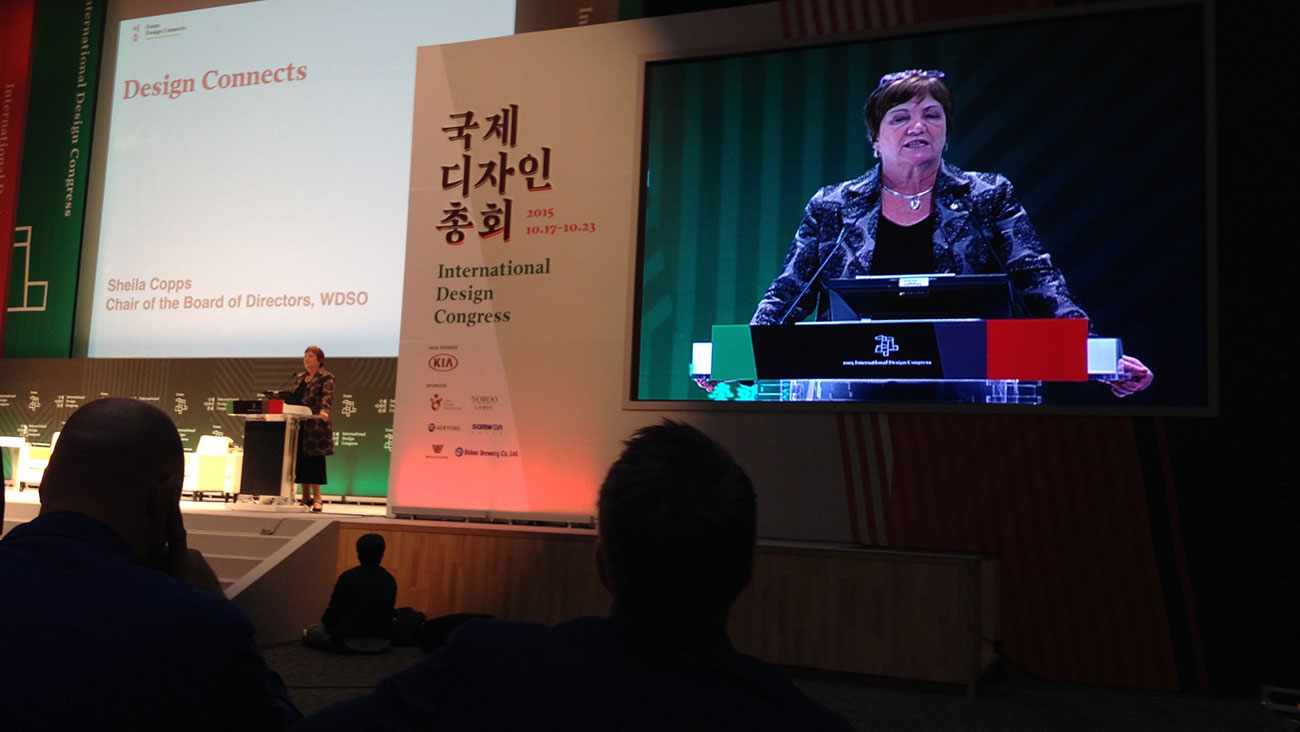
03 Nov Sheila Copps Challenges Designers to Address Global Issues
At the Eeum Design Connects international congress this past October in Gwangju, South Korea, Sheila Copps delivered a riveting keynote address that challenged the design community to effectively address global issues such as climate change and sustainability. Copps currently heads the World Summit and Congress of Architecture + Design + Planning, the 2017 international design congress which will bring together a multitude of design disciplines. She was asked to replace the scheduled keynote speaker, Victor Margolin, who was sadly injured right before the Congress. If the last-minute call caused any difficulty, it wasn’t evident in either the content or delivery of her speech.
In her address, Copps focused on how design can be used as a leverage for political action. She related that in her 25+ years in politics, she never heard from designers or design organizations, despite the fact that designers work on solutions to many of the issues being addressed by communities and governments. She then asked when, where, and how do designers connect with decision-makers:
“Designers who come together for the common good of the community will get the ear of government… Designers CAN change the world. You design for people. You do not design in a void.”
She concluded her address with ten steps the design communities can take to connect to decision makers, governments, and communities:
1. Determine the outcomes do we want, and reverse engineer those outcomes.
2. Create simple concepts such as “green design” that are easily communicated and which people can rally around.
3. Develop metrics and measurement tools that international decision makers can implement.
4. Utilize international design champions to promote our common objective.
5. Determine the ten key elements of what constitutes good design in a horizontal fashion.
6. Measure the real cost of cradle-to-grave cost of disposability.
7. Create template for action that is easily understood by governments, NGOs, and the business community, so that design becomes a sustainable economic driver.
8. Create great design which adds value to society that will build value in cities, communities, buildings, etc.
9. Create the potential for tax incentives. Financial incentives come from a design connection that understands how to make good politics.
10. Help policy makers develop tools so that we can measure our footprints.
